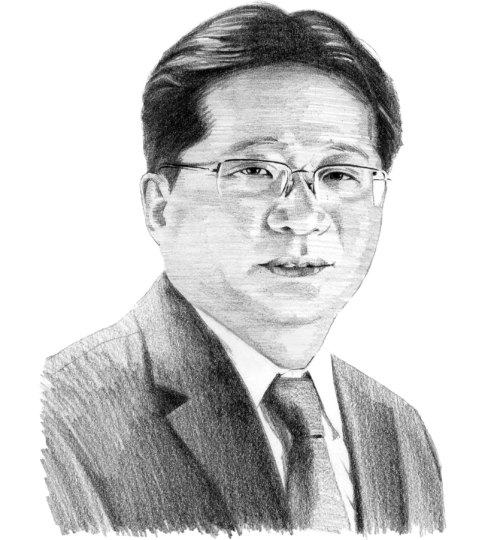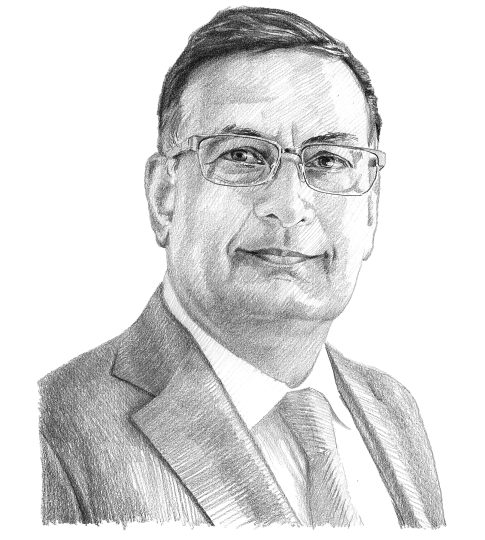Mongolia strives for a more inclusive democracy
June elections signal a shift toward pluralism and political reform while ensuring foreign policy continuity.

In a nutshell
- Coalition government tasked with enhancing economic growth, ensuring long-needed reforms
- Mongolia will continue balancing foreign policy between Russia, China and Western nations
- New electoral system is expected to promote regional development
Mongolia’s parliamentary elections in late June and the subsequent creation of a coalition government confirm that voters demand pluralism in national politics. Following the vote, judicial and law enforcement reform and a focus on effective governance are outcomes that are likely to unfold. In parallel, expect measures to enhance economic growth, develop infrastructure and maintain a highly nuanced foreign policy that cooperates with Russia, China and the democratic West.
These were Mongolia’s ninth parliamentary elections since the change from a single-party communist state with the adoption of a new democratic constitution in 1992. In this election all parties elected to the parliament claimed success.
In the vote, the Mongolia People’s Party achieved its third consecutive victory since 2016, securing 68 seats in the expanded State Great Khural, Mongolia’s unicameral parliament, and remaining the largest parliamentary grouping. The consecutive victory was historic, as no party was able to secure such success in three decades of democratic elections. Yet the price was a diminished majority of 54 percent of seats compared to the mammoth 83 percent it secured in the previous election.
The center-right opposition Democratic Party received 42 seats, boosting its parliamentary weight from under 20 percent to 33 percent. The HUN party, the Mongolian abbreviation for National Labor Party, secured eight seats and increased its parliamentary presence from 1.3 percent to 6 percent.
The National Coalition, consisting of the Green and National Democratic parties, and the Civil Will-Green Development Party, each garnered four seats. The election also resulted in more female representation largely elected on the proportionate lists, where parties were required by legislation to nominate an increased number of women. The success of multiple parties highlights a desire among the country’s voters for more varied representation in the young democracy.
Facts & figures
Composition of Mongolia’s new, expanded parliament

Maturing democracy in Mongolia
As with the country’s previous elections since 1992, the process was considered free and fair by prominent international observers, and all parties accepted the results. The outcome was recognized by Brussels and Washington, among others, reinforcing the position of Mongolia as an island of democracy in the Central Asian region. The newly elected members of parliament took the oath without delay on July 2, 2024. The three biggest parties swiftly formed a coalition government in July and on August 12 signed a “Courage for Rapid Development” coalition agreement that incorporates goals from the programs of the three coalition parties.
While acrimonious and personal accusations dominated the election campaign, it also crystallized the long-needed reform agenda for the new coalition government. The campaign highlighted the most pressing issue in need of reform: bringing to an end to abuse of law enforcement and the judiciary against political opponents in the name of fighting corruption. The people who allegedly suffered false accusations said it was like “passing through the tunnel of injustices and repression.” Unless the whole system is thoroughly reformed, there is a danger that it could serve as a tool for democratic backsliding, and the worst excesses may be repeated.
Also, thanks to increasing civic participation and an acceptance of the need to refine the political system, this is the first time that the parliament will consist of 126 seats (an increase from 76 seats), with some mandates being awarded on a proportional, national basis. Rural constituencies have 54 seats, 24 come from the capital city and the remaining 48 are elected on one-country, one-constituency proportional party lists.
Read more by Zorigt Dashdorj
- Scenarios for a ‘new normal’ in geopolitics
- Mongolia’s Oyu Tolgoi struggle
- Educational meritocracy and East Asia’s development miracle
The trend is clearly marked: the representation of smaller parties gives a voice to voters disillusioned with major parties. That was widely expected and accomplished by design: Prime Minister Luvsanamsrai Oyun-Erdene of the People’s Party, in the post since 2021, said ahead of the election that his party adopted constitutional reform to increase the number of parliamentary seats while enabling a proportional system knowing full well that it benefits the opposition and smaller groups.
The prime minister said the decision is based on the conviction that a robust democratic parliament makes the country stronger and that the smaller parties should debate not on the streets but inside the walls of the parliament. A likely outcome of this development is that if the proportional system endures, it will empower additional parties and more varied voices on both the left and right over time.
The country’s need for stability
Like voters worldwide, Mongolia’s electorate in recent years has become disillusioned with established parties and the economic outcomes. A historical lack of representation of smaller parties made the established players vulnerable to take-over by radical populists from within.
Alternatively, the radicalization of voters not represented in the parliament could eventually lead to a political takeover by the extreme fringe. There is a hope that the expansion of parliament and introduction of the proportional system will temper populist tendencies by making the center of the spectrum more amenable to cooperation.
Mongolia had almost 20 prime ministers during the first three decades of democratic rule. Further instability or backsliding would likely prevent the country from stabilizing its economic growth trajectory.
Mining is its economy’s largest segment, accounting for nearly a third of industrial output, while cashmere and other agricultural exports are also a significant income source. Gross domestic product (GDP) growth has been erratic. It peaked at 17 percent in 2011 and then collapsed to a mere 1.5 percent in 2016 before rising again and then contracting in 2020 during the Covid-19 pandemic and lockdowns.
Facts & figures
Ineffective and unstable governance, both at the political and bureaucratic levels, is a critical factor in Mongolia’s lackluster growth despite its enormous resource endowment. The constitutional change has brought the desired democratic surge, but that may not be enough to ensure stable economic growth and social advancement. One pursuit that the current national coalition seems to strive for is the “Switzerland model,” where all major parties are included in the government to foster stability over time. That brings other challenges, such as transparency and accountability.
The changes are also intended to strengthen political parties and make them more like the Western parliamentary parties, weakening electoral patronage linkages. The goal is to increase the government’s support for regional development, benefiting multiple provinces at the expense of patronage links that lead to direct budget funding to single provinces and pet projects. Schools, cultural centers, hospitals, swimming pools that exceeded the population demand of small cities and villages, roads running to almost nowhere or of less crucial need, and the like were already becoming a wasteful strain on the budget. Potentially, larger constituencies could lead to regional infrastructure projects of higher priority. That is significant because each rural district in Mongolia is geographically comparable in size to France.
Central Asian geopolitical realities
Looking abroad, the global geopolitical environment has not been this tense at any point in the last three decades. Mongolia is surrounded geographically by Russia and China and has no access to the sea. No other country in the world has opportunities and challenges associated with such a location.
Mongolia has consistently remained neutral during the United Nations voting on the war in Ukraine while calling for a diplomatically negotiated solution. At a time when relations between Russia and the United States-led Western coalition are at their lowest in the last thirty years, and China-U.S. interactions have become more tense, Mongolia still seeks to maintain good-neighborly, balanced relations with both of its immediate neighbors. Yet it also continues to develop cooperation and trade with like-minded Western democracies.
The country has no alternative to a multipolar foreign policy. China is Mongolia’s largest trading partner by far and, in some cases, the only possible market. Good relations with Beijing are crucial for its economy. Energy supplies from Russia are also essential, while there is no alternative to transit through Russian routes. As a result, both neighbors have a decisive influence on Mongolia’s security, development and access to the rest of the world.
For Mongolia, multipolar foreign policy is key to development and security.
“Third neighbor” countries (defined as the U.S., the European Union and its member states, India, Japan, South Korea, Turkey and other major powers), geographically distanced from Mongolia, have made significant investments in the country’s dominant mining sector – primarily through the Oyu Tolgoi copper and gold deposit, one of the largest in the world.
Tens of thousands of Mongolians (a significant number for a small population of only 3.4 million) live, work or study in South Korea, the U.S., Europe, China, Japan and Russia, among other places. This group serves as important sources of knowledge transfer and remittances. It is stated in the country’s National Security Policy and Foreign Policy concepts, legislated by the parliament, that balanced relations in all three directions (Russia, China and Third neighbors) are to be maintained as a priority, being crucial for security and development. This policy has been maintained over the last three decades and is the only policy issue where all major political forces so far have a consensus.
One poignant point needs to be made here: Foreign observers often, including before this election, speculate whether Mongolia will move toward Russia, China or the West, making a mistake typical of a “colonial great power” mentality by categorizing nations and their politicians as being “pro-” some foreign power.
For Mongolia, multipolar foreign policy is key to development and security. Its cooperation with major partners is driven by the pragmatic logic of Mongolia’s interests and necessities. This particularistic attitude, shared by all key political groupings, will determine Mongolia’s foreign policy toward these multiple centers of global power, and the country will not be predisposed towards any foreign power.
Scenarios
Certain: Multi-pole foreign policy will continue
While the generation of the Mongolian People’s Party that designed and implemented the strategy of cooperation in all three directions has retired (the remnants departing following this election), President Ukhnaa Khurelsukh, in office since 2021, and Prime Minister Oyun-Erdene have been active in all three directions, visiting and receiving high-level dignitaries from all partner states. With these two at the helm, the continuity of the balanced multipolar foreign policy looks assured.
Inside the Democratic Party and other parliamentary parties the picture is less unified. While some openly oppose certain policies of Russia and China, others publicly stated that Mongolia has only two neighbors, Russia and China. The rising number of new and untested players inside the parliament may also have an impact. The overall result this brings to Mongolia’s foreign policy will unfold, though the leadership will aim for continuity in foreign policy.
Likely: Diverse parliament to focus on domestic economic issues
The government is confronted with problems that include securing affordable housing for a growing population, tackling air pollution, building energy and road infrastructure and finding ways to narrow the income gap created by mining linked to global markets.
The broader domestic economy, largely reliant on the limited local market, requires substantial public and private investment and quality governance. The new, more diverse parliament may bring more balanced solutions, potentially spurring rapid economic growth like that between 2008-2012 under the last coalition government when the GDP growth reached 17.3 percent. Going forward, a point to follow is the latest Constitutional reforms and if they deliver stable and effective governance in addition to the already more varied composition of parliament. The increased number of new and untested forces bring a new unknown to be resolved.
For industry-specific scenarios and bespoke geopolitical intelligence, contact us and we will provide you with more information about our advisory services.










